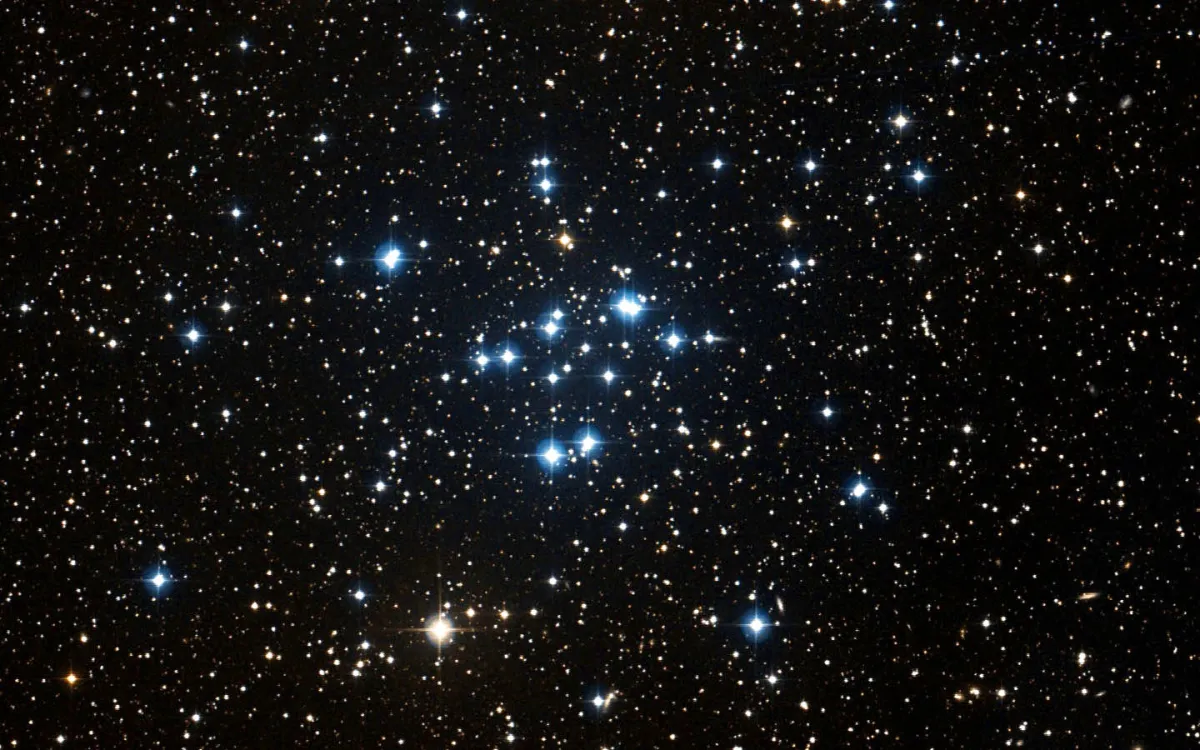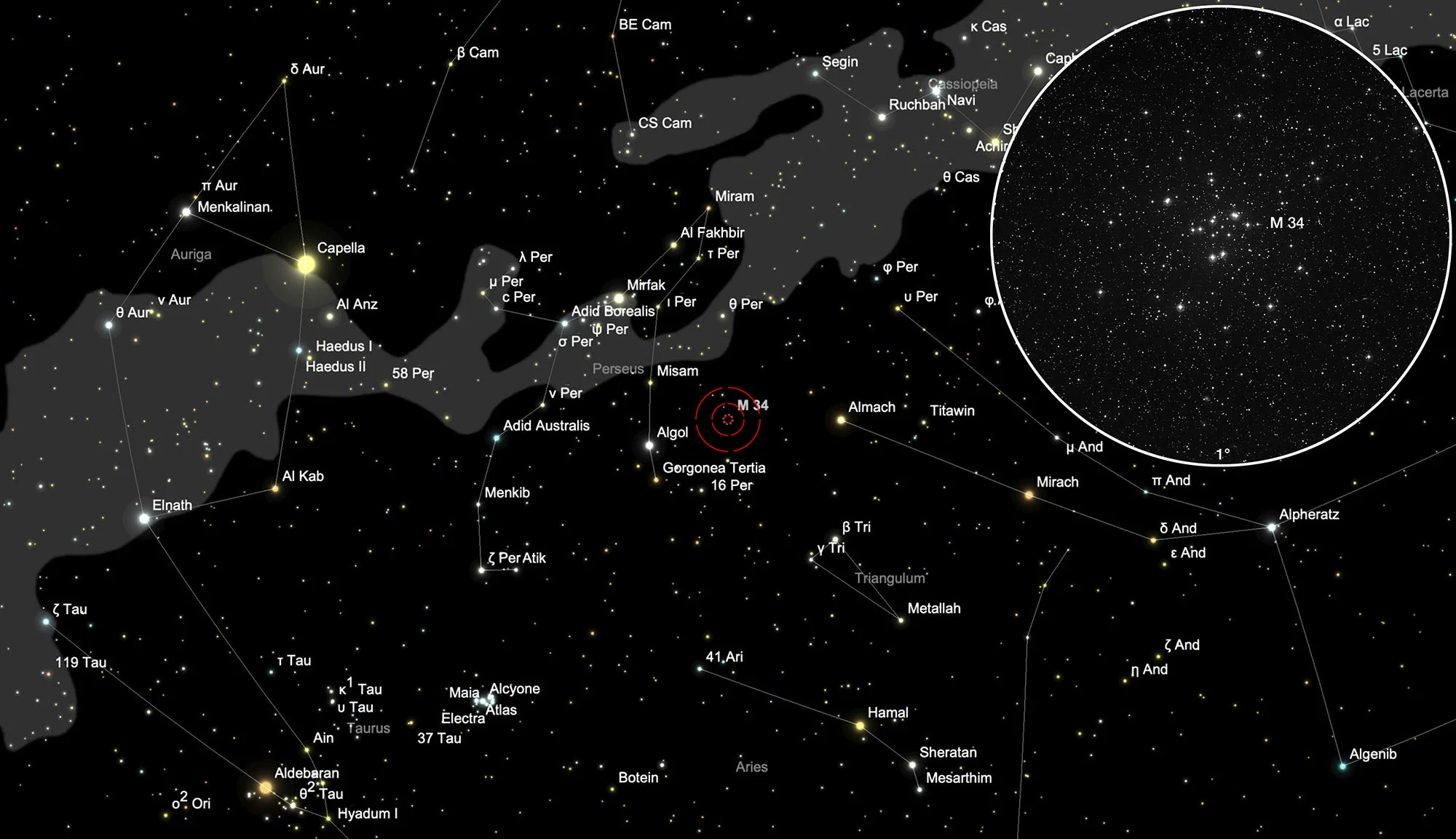Open Cluster Messier 34

History
The discovery of M 34 can be attributed to the Italian astronomer Giovanni Hodierna in 1654. Unfortunately, the publication of his discovered and now famous nebula found little notice outside his homeland of Sicily. It so happened that it was unknown to Charles Messier when he rediscovered the star cluster on 25 August 1764. He noted: «A cluster of small stars, a little below the parallel γ Andromedae; in an ordinary telescope of three feet [focal length] the stars can be distinguished.» [4, 194]
Physical Properties
M 34 is an open star cluster according to the Trumpler classification II3m. According to distance information on Simbad, it is located at a distance of about 1600 light years and is moving in our direction at about 7 km/s. The age is estimated to be around 100 to 200 million years. The cluster will slowly dissolve over time as it migrates around the centre. [145, 196]
| Designation | NGC 1039 |
| Type | OCL (II3m) |
| Right Ascension (J2000.0) | 02h 42m 05.0s |
| Declination (J2000.0) | +42° 45' 42" |
| Diameter | 25 arcmin |
| Visual magnitude | 5.2 mag |
| Metric Distance | 0.499 kpc |
| Dreyer Description | Cl, B, vL, lC, sc st 9 |
| Identification, Remarks | h 248; GC 584; M 34; OCL 382 |
Finder Chart
The open star cluster M 34 is located in the constellation Perseus approximately in the middle between Algol (β Persei) and Almach (γ1 Andromedae). It is visible to the naked eye on a dark night, preferably from July to April.
